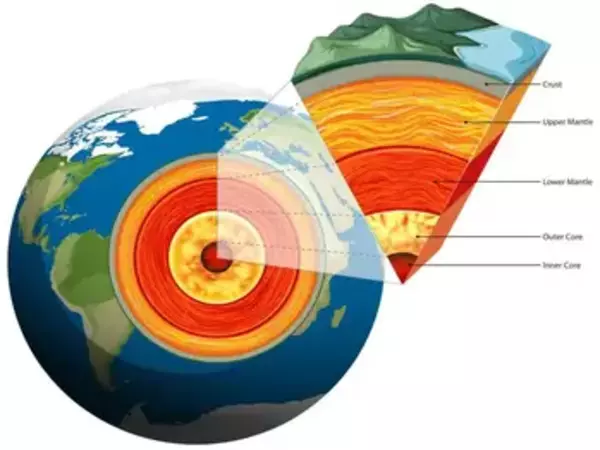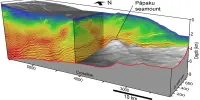Deep earthquakes, defined as those that occur at depths greater than 300 kilometers (186 miles), have provided important insights into the Earth’s mantle and its properties. Deep earthquakes occur within subducting oceanic plates as they sink into the Earth’s mantle, whereas most earthquakes occur at shallow depths along tectonic plate boundaries.
According to a new study from the University of Chicago, there may be a layer of surprisingly fluid rock ringing the Earth at the very bottom of the upper mantle. The discovery was made by measuring the lingering movement recorded by GPS sensors on islands in the Pacific Ocean near Fiji after a deep earthquake. The study, published in Nature, demonstrates a new method for measuring the fluidity of the Earth’s mantle.
“Even though the mantle makes up the largest part of Earth, there’s still a lot we don’t know about it,” said Sunyoung Park, a geophysicist with the University of Chicago and the lead author on the study. “We think there’s a lot more we can learn by using these deep earthquakes as a way to probe these questions.”
We want to know exactly how fast the mantle flows, because that influences the evolution of the entire Earth – it affects how much heat the planet retains for how long, and how the Earth’s materials are cycled over time. But our current understanding is very limited and includes a lot of assumptions.
Sunyoung Park
Mantle mysteries
Surprisingly little is known about the Earth beneath our feet. The deepest anyone has gone is about seven and a half miles before the rising heat literally melts the drill. As a result, scientists have had to rely on clues such as the movement of seismic waves to infer the different layers that comprise the planet, including the crust, mantle, and core.
A precise measurement of the viscosity of the mantle layer has eluded scientists. The mantle is the layer that lies beneath the crust. It’s made of rock, but due to the extreme temperatures and pressures at that depth, the rock becomes viscous, flowing slowly like honey or tar.
“We want to know exactly how fast the mantle flows, because that influences the evolution of the entire Earth – it affects how much heat the planet retains for how long, and how the Earth’s materials are cycled over time,” explained Park. “But our current understanding is very limited and includes a lot of assumptions.”
Park thought there might be a unique way to get a measurement of the mantle’s properties by studying the aftermath of very deep earthquakes.

Most earthquakes we hear about in the news are relatively shallow, originating in the Earth’s top crust. However, earthquakes that originate deep within the Earth – up to 450 miles below the surface – occur on occasion. Because they are less destructive to human settlements, these earthquakes are not as well studied as shallower ones. However, because they reach deep into the mantle, Park believed they might provide a means of understanding the mantle’s behavior.
Park and her colleagues investigated one such earthquake that occurred off the coast of Fiji in 2018. The quake had a magnitude of 8.2, but it was so deep (350 miles) that it caused no major damage or deaths. However, after carefully analyzing data from GPS sensors on several nearby islands, the scientists discovered that the Earth continued to move even after the earthquake had ended.
The data revealed that the Earth was still moving in the months following the quake, settling in the wake of the disturbance. Even after years, Tonga is still sinking at a rate of about 1 centimeter per year.
“You can think of it like a jar of honey that slowly comes back to level after you dip a spoon in it — except this takes years instead of minutes,” said Park.
This is the first solid observation of deep earthquake deformation; the phenomenon had previously been observed for shallow earthquakes, but experts thought the effect would be too small to notice for deep earthquakes.
This observation was used by Park and her colleagues to calculate the viscosity of the mantle. They discovered evidence of a layer about 50 miles thick that is less viscous (that is, “runnier”) than the rest of the mantle, sitting at the bottom of the upper mantle layer, by examining how the Earth deformed over time. They believe this layer may extend all the way around the world.
This low-viscosity layer could explain some other seismologists’ observations of “stagnant” slabs of rock that don’t move much and are located around the same depth at the bottom of the upper mantle. “It’s been difficult to reproduce those features with models, but the weak layer discovered in this study makes it easier,” Park said.
It also has implications for how the Earth transports heat, cycles materials, and mixes them over time between the crust, core, and mantle. “We’re really excited,” said Park. “There’s a lot more to learn about this technique.”
















